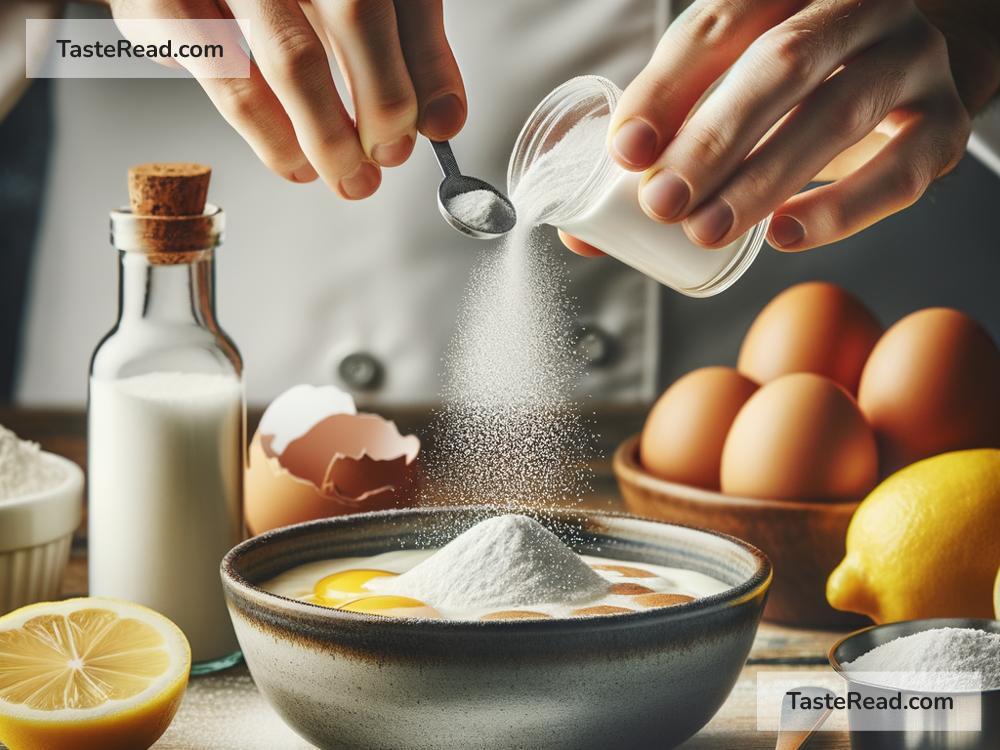The Science of Cooking with Chemical Rapidity: Techniques and Tips
Cooking is an everyday activity that combines creativity, tradition, and, surprisingly, a lot of science! At its core, it’s all about chemical reactions. When food is heated, cooled, or mixed with the right ingredients, tiny molecules interact and transform into delicious dishes. But what happens when we need to speed up these magical processes? That’s where the concept of chemical rapidity comes into play.
Chemical rapidity refers to how quickly reactions happen in cooking. By understanding a few simple scientific principles, we can cook faster, preserve flavors, and make our meals even more enjoyable. In this blog, we’ll dive into the science, techniques, and tips on how to speed up cooking processes without sacrificing taste or quality.
What Is Chemical Rapidity in Cooking?
Chemical rapidity happens when food undergoes quick reactions to change its texture, flavor, or appearance. These reactions often depend on factors like heat, acidity, enzymes, and even the surface area of the food.
For example:
– Baking a cake involves rapid chemical reactions between baking powder (or baking soda) and heat to make it rise.
– Caramelization happens quickly when sugar heats up, creating that golden-brown, sweet flavor in desserts and vegetables.
Whether you’re roasting veggies, searing meat, or kneading dough, understanding these speedy reactions can help you cook smarter!
The Science Behind Chemical Rapidity
The speed of cooking reactions depends on three main factors:
-
Temperature: Higher temperatures make molecules move faster, increasing reaction speeds. That’s why boiling water cooks pasta quicker than soaking it in cold water.
-
Surface Area: Cutting food into smaller pieces creates more surface for heat or other ingredients to interact with, which speeds things up. For instance, diced potatoes cook faster than whole potatoes.
-
Concentration: The concentration of ingredients and chemicals (like salt, acids, or sugars) can influence reaction speed. Adding salt to boiling water speeds up the cooking process by raising its boiling point slightly.
When these factors are optimized, cooking becomes faster and more efficient.
Techniques to Cook with Chemical Rapidity
Here are some practical cooking techniques that harness the power of chemical rapidity:
1. Preheat Your Cookware
Hot pans or baking trays speed up the cooking process. For example, a preheated skillet allows you to sear meat instantly, locking in juices.
2. Cut Food into Smaller Pieces
Maximize surface area by chopping food into smaller portions. Vegetables, fruits, and meats will cook more quickly and evenly.
3. Use Acid to Speed Up Marinades
Acidic ingredients like vinegar or lemon juice allow marinades to penetrate food faster. The acid helps break down proteins in meat, tenderizing it more quickly.
4. Choose High-Heat Methods
Cooking techniques like grilling, broiling, or stir-frying involve direct exposure to high heat, speeding up reactions like caramelization and browning.
5. Use Pressure in Cooking
Pressure cooking traps steam, raising the temperature and speeding up the cooking process. Foods like beans or stews cook in a fraction of the time compared to boiling.
6. Use Baking Soda or Baking Powder
These ingredients are “leaveners” that produce CO2 gas to help baked goods rise quickly. Always measure them properly, though—a little goes a long way!
7. Sous Vide for Precision
Sous vide involves cooking food in vacuum-sealed bags in a water bath at controlled temperatures. Although slower in some cases, it speeds up chemical consistency—for perfect results every time.
8. Add Salt to Boiling Water
Have you ever heard chefs say to “salt your water like the sea”? Salt raises the boiling point of water slightly and enhances food’s taste while speeding up cooking.
Tips for Faster Cooking Without Sacrificing Flavor
Cooking quickly doesn’t mean sacrificing quality or taste. Here are a few tips to make speed delicious:
-
Prep Ingredients Ahead of Time: Chop, peel, or measure everything before starting to cook. This saves time during cooking and ensures you’re not rushed.
-
Experiment with Zest and Spices: Amp up flavor quickly by using strong seasonings like garlic, ginger, chili, or lemon zest. These add punch without long cooking times.
-
Don’t Crowd the Pan: Crowding lowers the temperature and slows down browning reactions. Cook in batches if necessary.
-
Let Ingredients Rest: Even rapid reactions benefit from rest. Let cooked meat rest briefly to allow juices to redistribute, enhancing flavor and moisture.
-
Practice Good Timing: Multi-task by boiling pasta while preparing the sauce or roasting vegetables while pan-searing protein.
Why Chemical Rapidity Matters in Modern Cooking
With busy schedules and limited time, cooking quickly has become more important than ever. Using science-backed techniques allows us to prepare meals faster without compromising flavor or nutrition. Whether you’re a beginner or a seasoned cook, understanding how heat, acidity, and surface area affect reactions can take your cooking to the next level.
Cooking isn’t just an art—it’s science in action. By paying attention to chemical rapidity and employing techniques like high-heat cooking or strategic ingredient use, we can create meals faster, tastier, and more efficiently. So, the next time you step into the kitchen, channel your inner scientist, and start experimenting!
Cooking with chemical rapidity is not just a way to save time—it’s a way to unlock flavors and textures you didn’t know were possible. Embrace the science, and cook with confidence!


